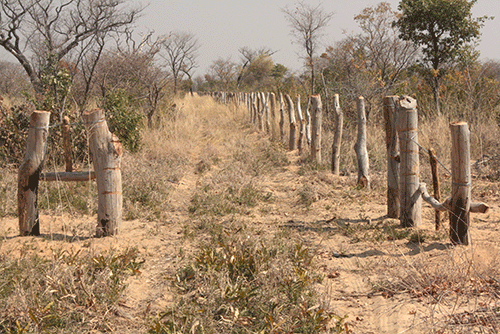Despite President Hage Geingob’s directives for relevant ministries to put shoulders to the wheel and start implementing laws prohibiting illegal fencing in various communal areas, the prohibitive practice persists to the detriment of farmers in communal areas.
The issue came to the fore during a recent visit of parliamentarians to Otjozondjupa, Zambezi and the Kavango East region, where many raised concerns about the increase in illegal fencing in communal areas.
“The Geiriku Traditional Authority in Kavango east and Ju/Hoansi Traditional Authority leaders in Tsumkwe, Otjozondjupa region, were concerned with the increasing number of illegal fencing in communal areas,” reads part of the report, tabled in the National Council by its chairperson Lukas Muha in the chamber this week.
It is recorded that Ohangwena tops the list with 107 cases of illegal fencing reported between 2012 and 2015, followed by Otjozondjupa with 58 cases recorded during the same period, Omaheke (48), Omusati (42), Kavango East and West (36) and Oshikoto (16).
Geingob, just after the land conference in 2018, directed then safety and security minister Charles Namoloh to start implementing laws prohibiting illegal fencing in various communal areas without further delay.
At the time, Geingob said he is gravely disturbed by incidents of illegal fencing that are prevalent across communal areas, where these barriers restrict the movement of livestock.
Section 18 of the Communal Land Reform Act (Act 5 of 2002), enacted in 2003, takes a strong position against the erection of fences on communal lands, which is prevalent in Omusati, Ohangwena, Oshikoto, Omaheke and Otjozondjupa regions.
“A sensitisation and consultation process should start before law enforcement agencies move swiftly to enforce the law without fear and favour,” Geingob said at the time.
The Legal Assistance Centre (LAC) has over the years called for the removal of illegal fences in communal areas, saying they increase inequality between Namibians – those that can afford fencing materials and those fenced out.
LAC’s then coordinator on land, environment and development Willem Odendaal was of the view that illegal fencing in communal areas does not only affect grazing for the poor but also prohibits poor people from accessing firewood, thatching grass and even veld food that the poorest members of traditional communities depend on for their livelihood.
He said if ignored, illegal fencing is effectively rewarded, leading other fenced-off areas to ensure they have access to some part of the commonage.
Contacted for comment, the office of land reform minister Calle Schlettwein referred this reporter to a comment he made during a recent visit to Bravo, a resettlement farm in the Kavango West region.
Schlettwein said illegal fencing of communal areas is a problem Namibia is facing in many regions, where people move in and through illegitimate ways get access to land without proper leaseholds or the authority of traditional authorities the involvement of land boards.
“And it is a whole series of events that need to be cleaned up and relooked at so that our resettlement programmes go back to what they are supposed to be,” he added.
The Land Bill, brought to parliament last year, will allow for an increased fine for illegal fencing in a bid to rid the country of the practice, which has left many farmers without proper grazing for their livestock.
According to an update on the resolutions of the second land conference released last month, such an act will attract a fine of N$15 000 once the bill becomes law.
The fine for such transgression currently stands at N$4 000.
– ktjitemisa@nepc.com.na


